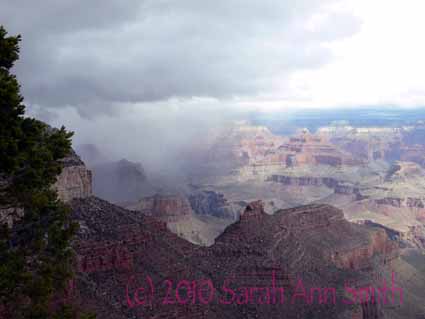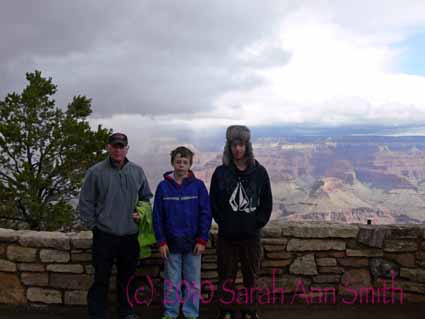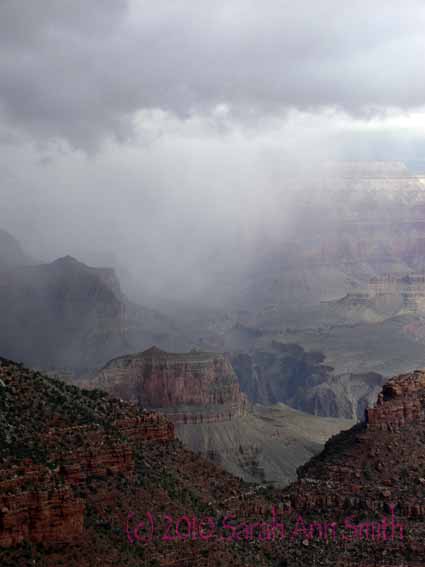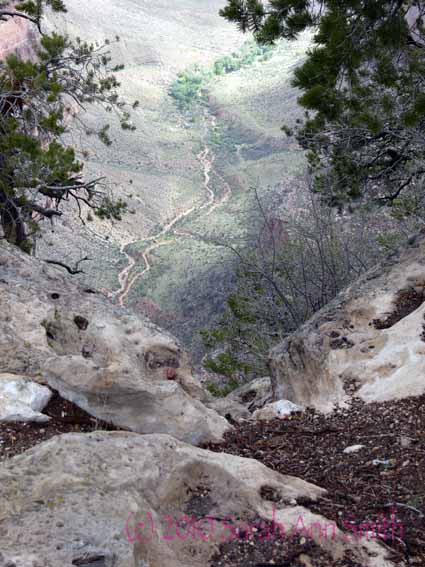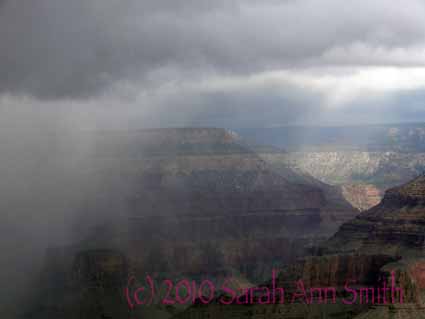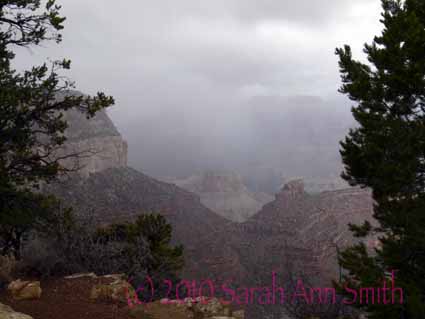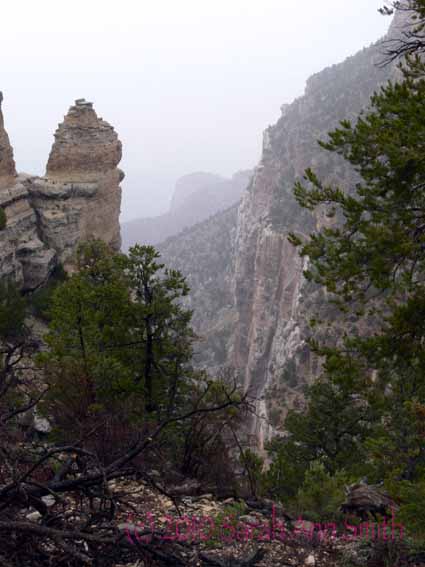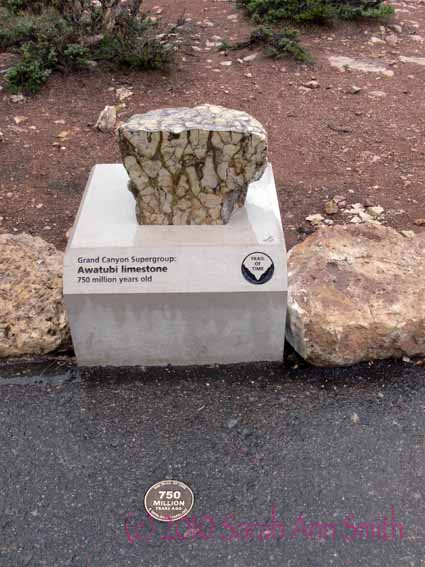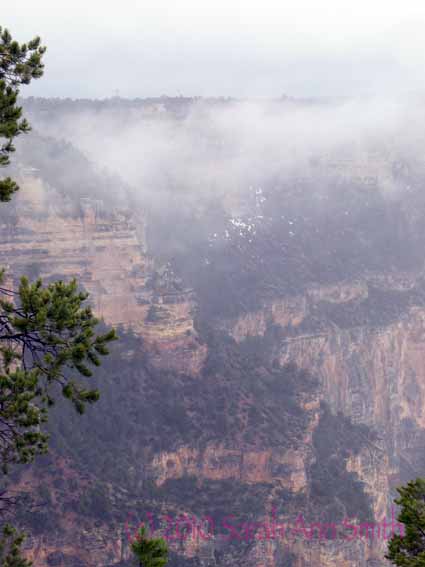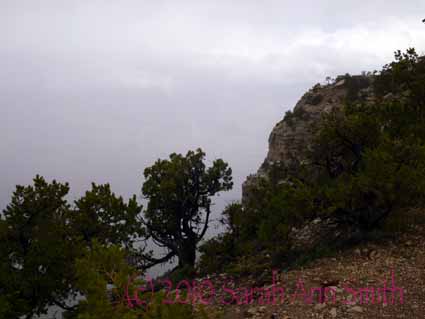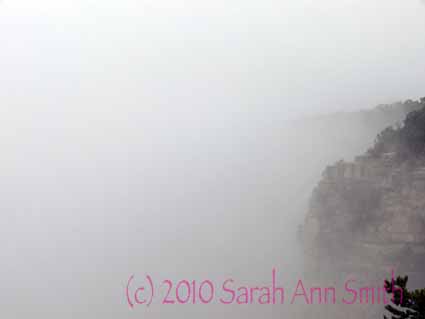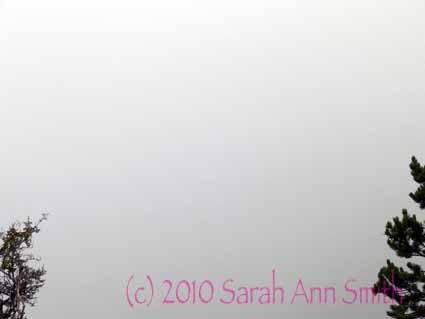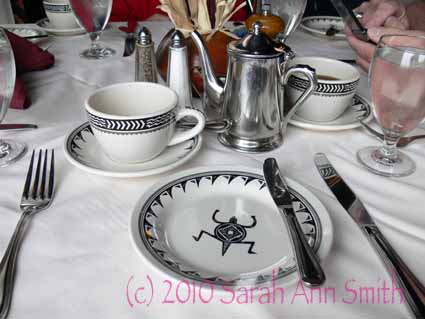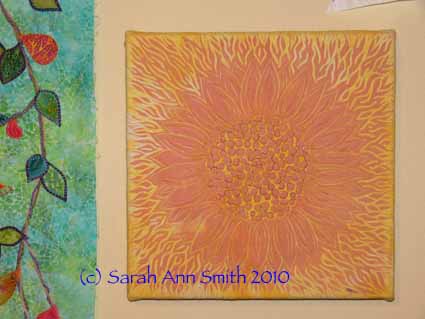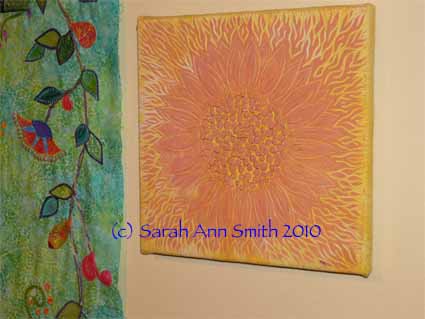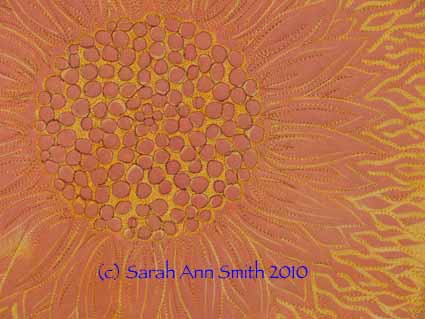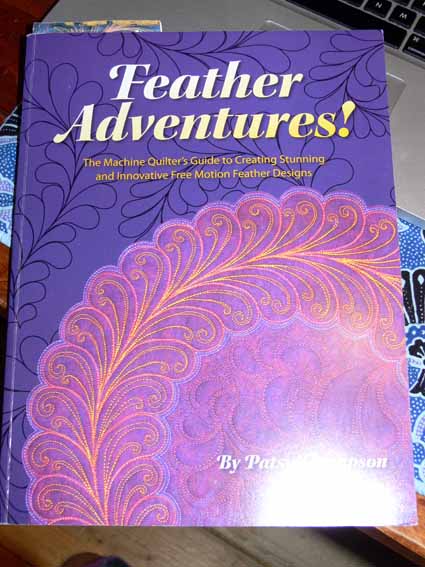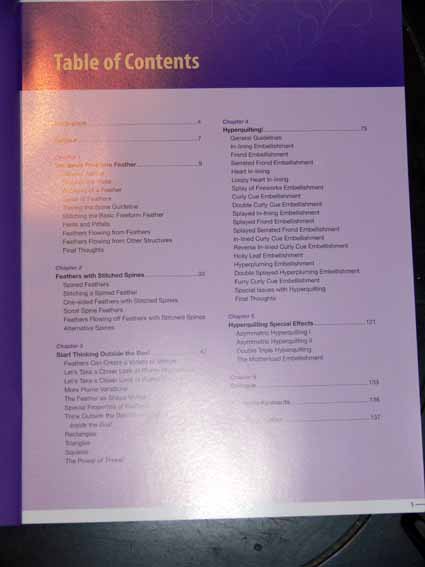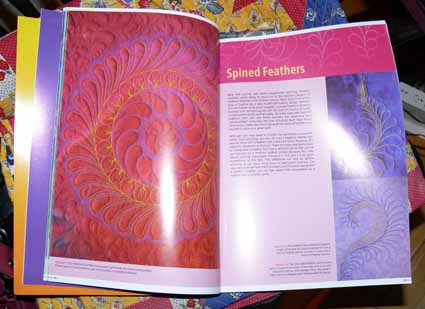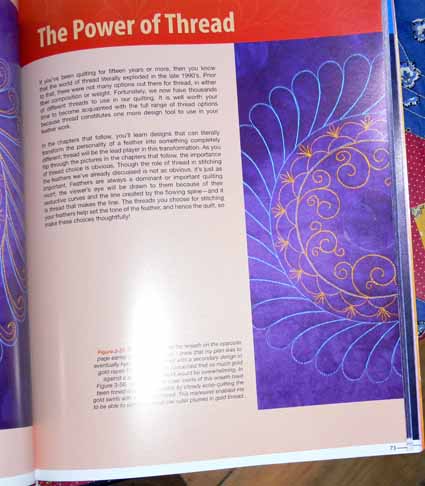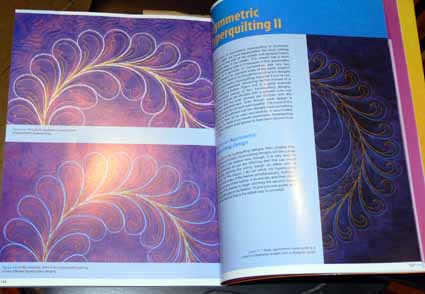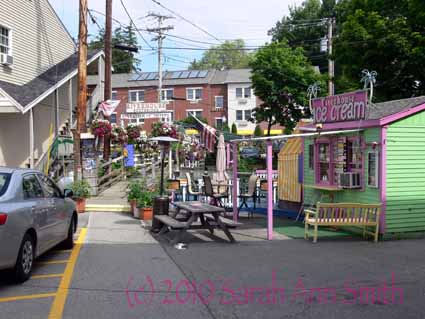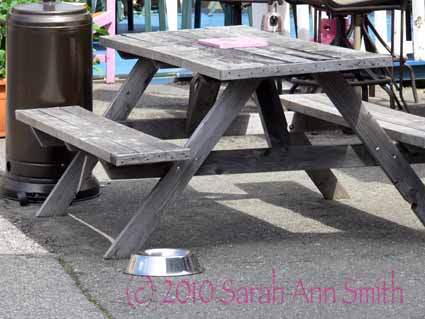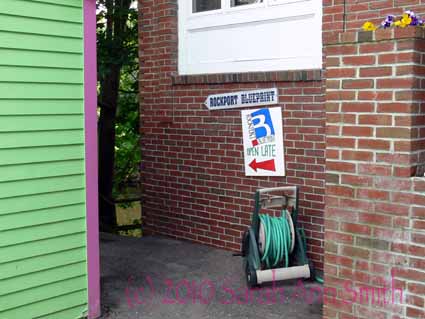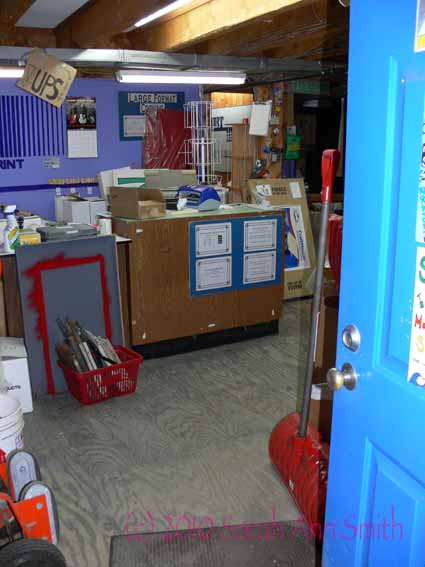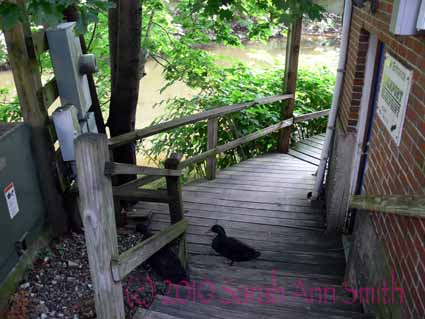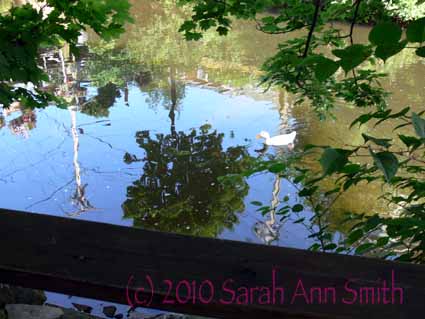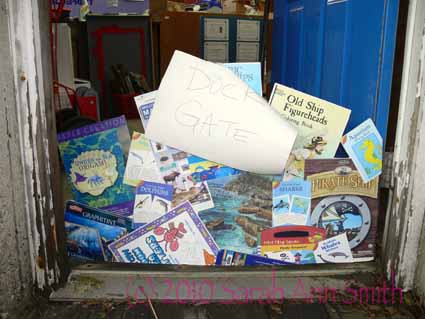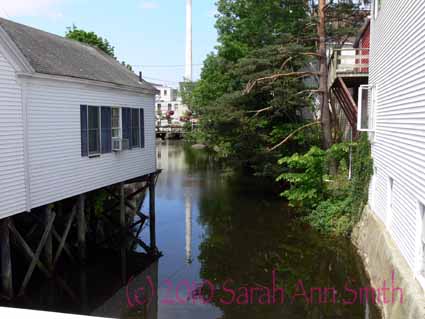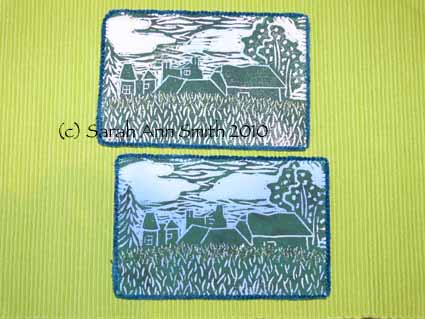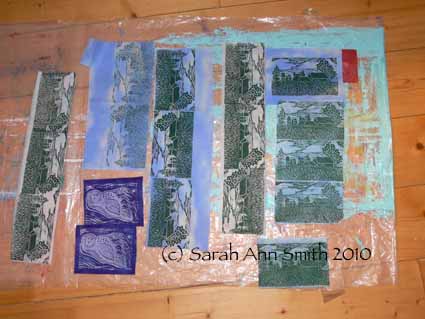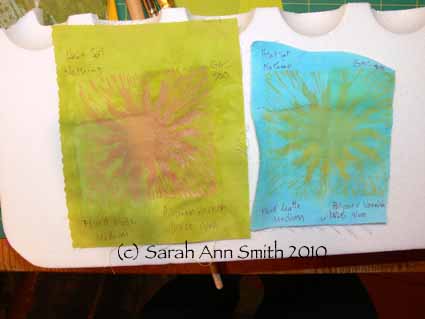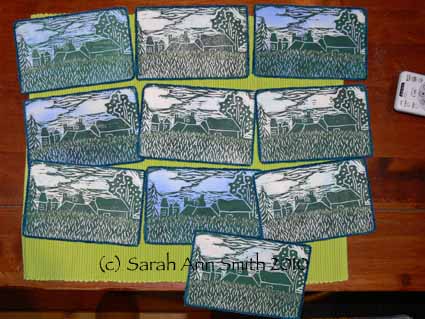The Grand Canyon, briefly
Thursday, July 8th, 2010Well…I’m only 2+ months behind on some blogging! I’ve been busy on the road teaching in Arizona, Massahusetts and Ohio (at the NQA show!), and then Knoxville (AQS), TN, in July! But I am trying to get caught up and share some of the lovely things I saw while on our family vacation after teaching in Arizona for the statewide quilt guild. Here is what the Grand Canyon looked like when we arrived at the South Rim in late April: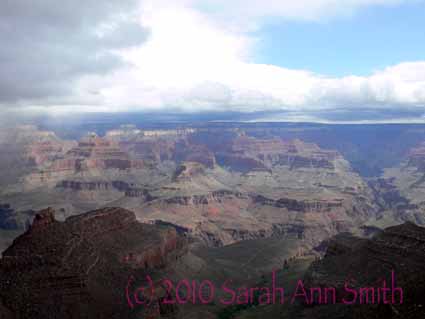
Notice that dark cloud on the horizon, especially to the left…well, it moved fast! The following sequence of photos was taken as we walked along the rim…took all of 40 minutes. We went from overcast:
Notice the cheerful (sigh…) family…woefully underdressed for the weather we were about to encounter:
All I can say is THANK HEAVENS the boys got this glimpse…even the jaded teenager went “WHOA!!!!!!” on first looking over the railing/wall!
To mist moving into the canyon about (literally) two minutes later:
Then looking down into the canyon:
And watching the veils of mist and snow and rain and shafts of sunlight–it was actually pretty cool to see this, as opposed to screaming blue skies and sunshine typical of summer:
To rain:
To clouds down in the canyon:
And the markers explaining the stone layers that you see:
And drifting cloud wisps–you can see the snow gathering on the north rim:
Then the north rim disappeared:
To SNOW…a late spring snowstorm.
To WhiteOut:
On the drive back to Flagstaff, cars on the Interstate highway had slowed to 25 miles an hour the road conditions were so slippery! So before we got on the road, we went into the big old inn for some hot food. I loved the table setting:

